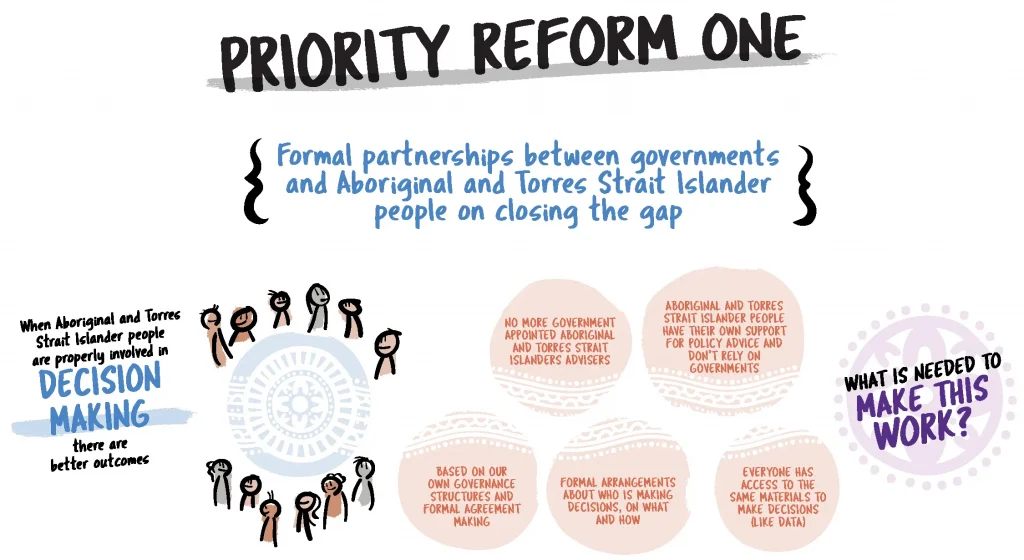
Developing and strengthening structures to ensure the full involvement of Aboriginal and Torres Strait Islander peoples in decision making at the national, state and local levels.
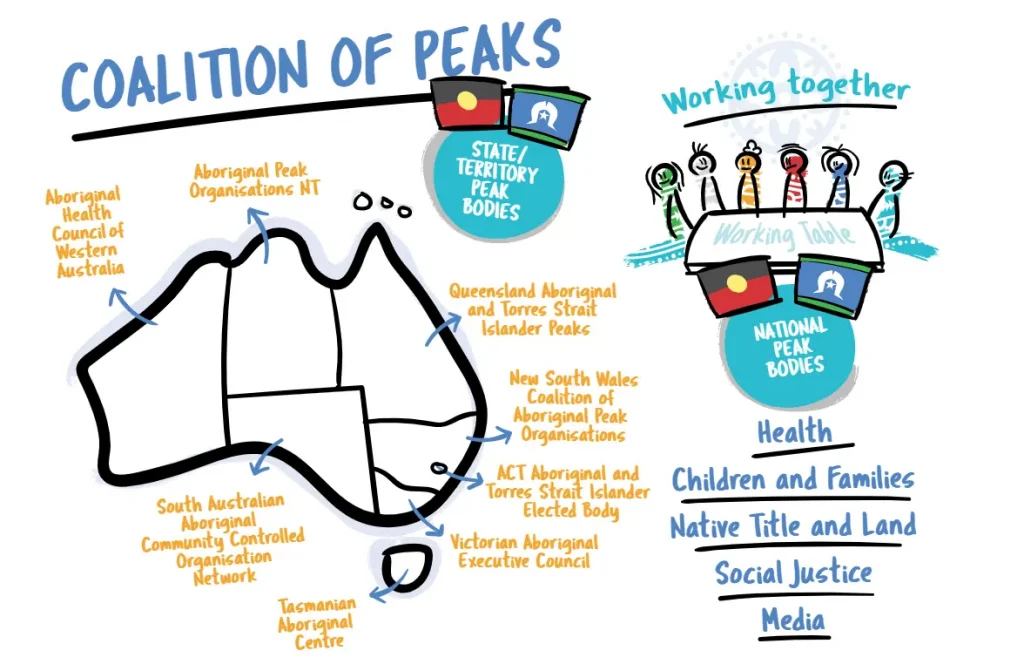

The Coalition of Peaks (CoP) comprises over 50 Aboriginal and Torres Strait Islander community-controlled peak and member organisations across Australia who came together to change how Australian governments work with our people. As a community-controlled organisation, the CoP works for and is accountable to our communities, not governments. The CoP share a belief that Aboriginal and Torres Strait Islander people should have a meaningful say on policies and programs that impact us through formal partnerships with Australian governments at all levels.
The Coalition of Peaks consists of members who are:
National, state and territory non-government Aboriginal and Torres Strait Islander peak bodies who have responsibility for policies, programs and services related to Closing the Gap
They are community-controlled in that they have governing boards elected by Aboriginal and Torres Strait Islander communities and/or organisations and are accountable to that membership
They each support the vision for a genuine partnership between Aboriginal and Torres Strait Islander people and the Australian Governments in developing and implementing efforts to close the gap
The National Agreement on Closing the Gap (the Agreement) is an agreement between Aboriginal and Torres Strait Islander people and governments to work together to overcome the inequality experienced by Aboriginal and Torres Strait Islander people and achieve life outcomes equal to all Australians.
Under the Partnership Agreement, the Coalition of Peaks sat down with Australian governments and looked at what had and hadn’t been working on Closing the Gap over the last ten years, what things could be strengthened and what needed to be changed.
The Coalition of Peaks and governments agreed that the National Indigenous Reform Agreement – an Agreement signed by Australian governments in 2008 that set out the original Closing the Gap strategy – was not working. A new National Agreement was needed- an agreement built around what Aboriginal and Torres Strait Islander people say is needed to improve their lives. The New National Agreement on Closing the Gap gained the support of the Coalition of Peaks and all levels of Australian Governments.
On the 3rd of July 2020, the Joint Council met to discuss the final draft of the National Agreement on Closing the Gap. It is the first National Agreement of its kind, developed in genuine partnership between the Coalition of Peaks and the Australian Governments.
The Joint Council is comprised of each State/Territory and Commonwealth Minister for Aboriginal Affairs and 13 nominated CoP members. This Council develops the priorities, targets and indicators for Closing the Gap.

Developing and strengthening structures to ensure the full involvement of Aboriginal and Torres Strait Islander peoples in decision making at the national, state and local levels.
Building the capacity of the Aboriginal and Torres Strait Islander community-controlled services sector to better support ACCOs to deliver Closing the Gap services.
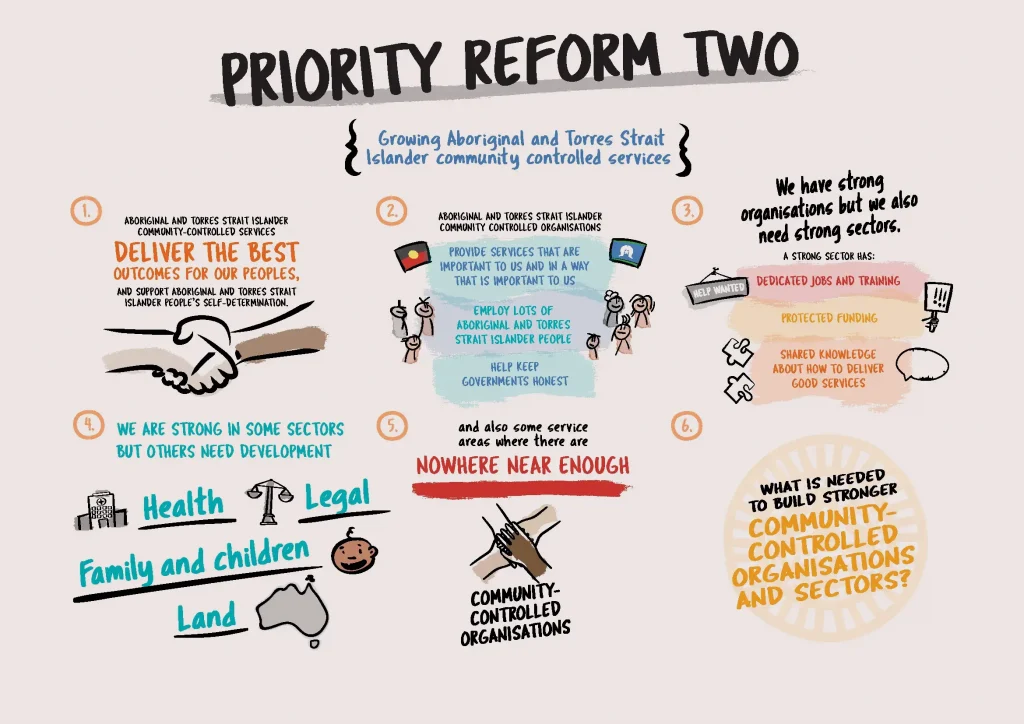
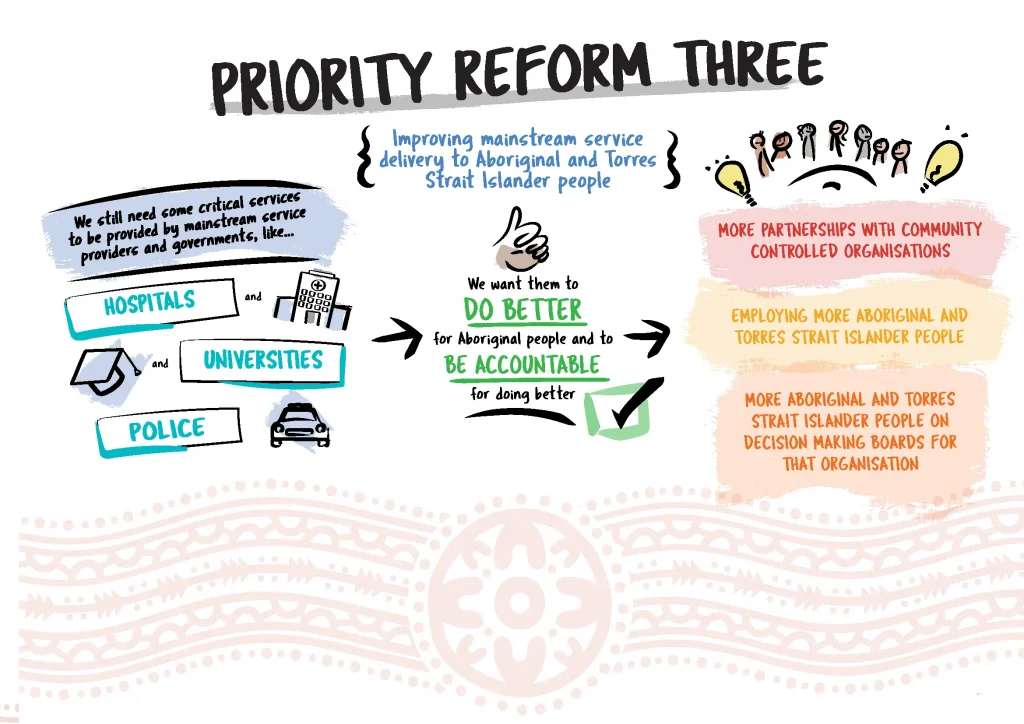
For all mainstream government agencies and institutions to undertake systemic and structural transformation to contribute to Closing the Gap; identifying and eradicating systemic racism and ensuring services are delivered in a culturally safe way.
Enabling Aboriginal and Torres Strait Islander communities to have access to, and the capability to use, locally relevant data and information to monitor the implementation of the Priority Reforms, the Closing the Gap targets and drive local priorities.
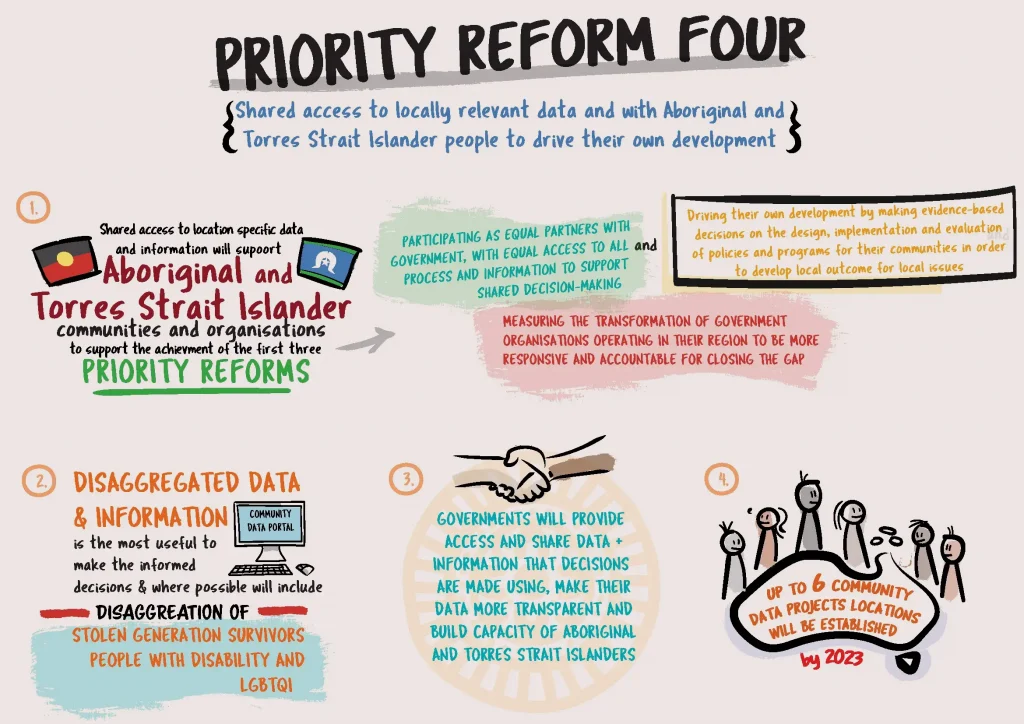
The Coalition of Peaks (CoP) comprises over 50 Aboriginal and Torres Strait Islander community-controlled peak and member organisations across Australia who came together to change how Australian governments work with our people. As a community-controlled organisation, the CoP works for and is accountable to our communities, not governments. The CoP share a belief that Aboriginal and Torres Strait Islander people should have a meaningful say on policies and programs that impact us through formal partnerships with Australian governments at all levels.
The Coalition of Peaks consists of members who are:
In 2021, SAACCON and the South Australian Government signed a historic agreement that commits to significant improvements to the lives of Aboriginal and Torres Strait Islander people living in South Australia.
The South Australian Joint Implementation Plan (the Plan) includes the following Priority Reforms:
Shared decision-making authority, with governments, to accelerate policy and place-based progress on Closing the Gap through formal partnership arrangements.
Building the community-controlled sector to be strong and sustainable, delivering high-quality services to meet the needs of Aboriginal peoples in South Australia.
Improving mainstream institutions: Ensuring Governments, their organisations and their institutions are accountable for Closing the Gap and are culturally safe and responsive to the needs of Aboriginal peoples, including the way in which Aboriginal Services are funded.
Aboriginal-led data: Aboriginal people have access to, and the capability to use, locally relevant data and information to set and monitor the implementation of efforts to close the gap, their priorities and drive their own development.
As a living document, the Plan will be regularly reviewed by SAACCON and the South Australian Government to ensure it continues to reflect the priorities of Aboriginal and Torres Strait Islander peoples. SAACCON believes this Plan is reflective of a new way of doing business between Aboriginal and Torres Strait Islander people and governments, giving our people a platform to lead discussions that allow us to determine what’s best for our communities. The document also recognises that services delivered by Aboriginal organisations achieve sustainable long-term outcomes for our communities.
The SAACCON logo was created using the notion of a gathering of groups and organisations coming together with a shared purpose, in this case, to Close the Gap. Physically to place the word SAACCON in the space of the group design to symbolise the group going to help Close the Gap.
Copyright © 2023 www.saaccon.org.au - All Rights Reserved.